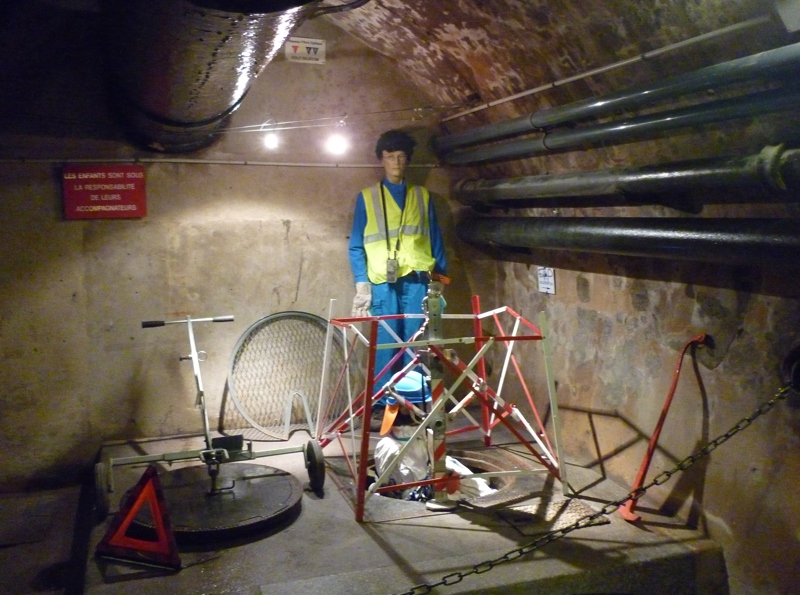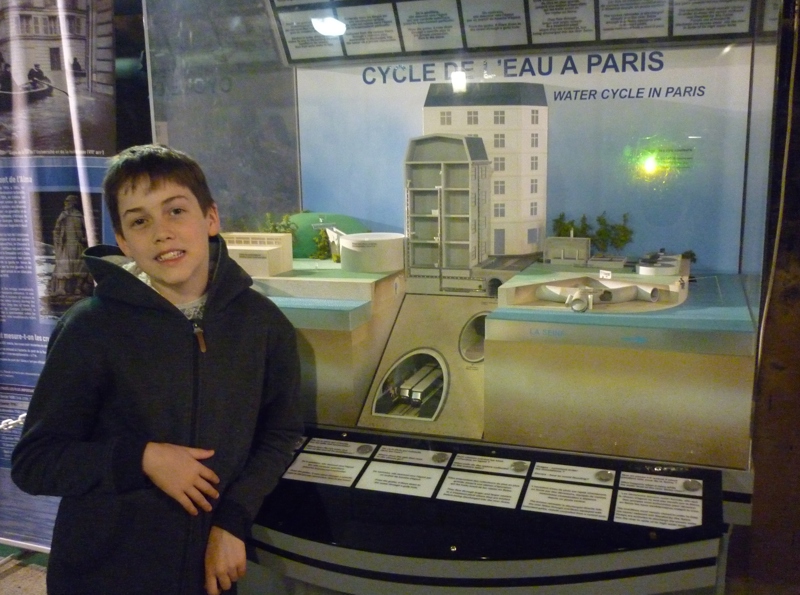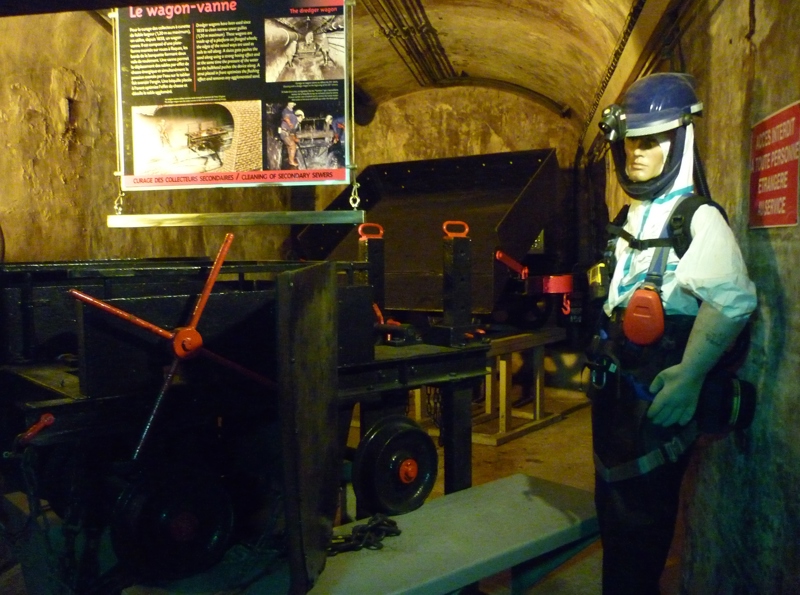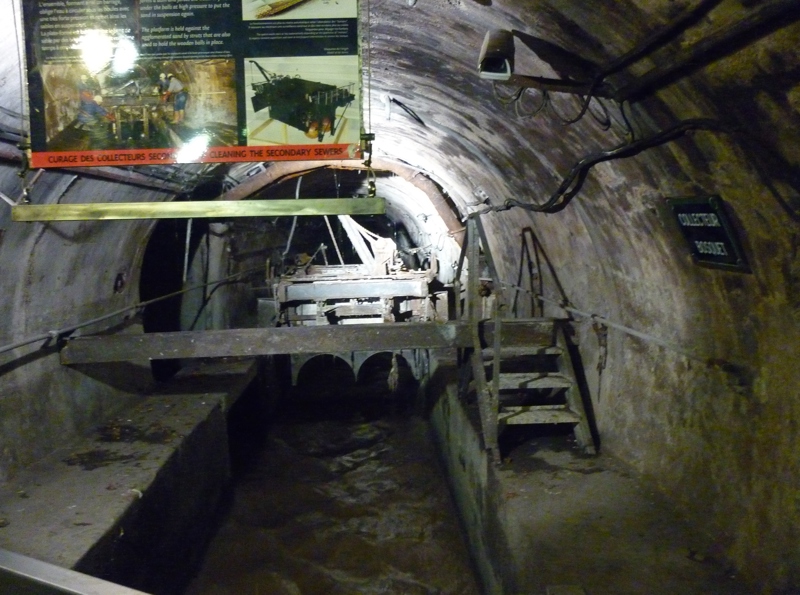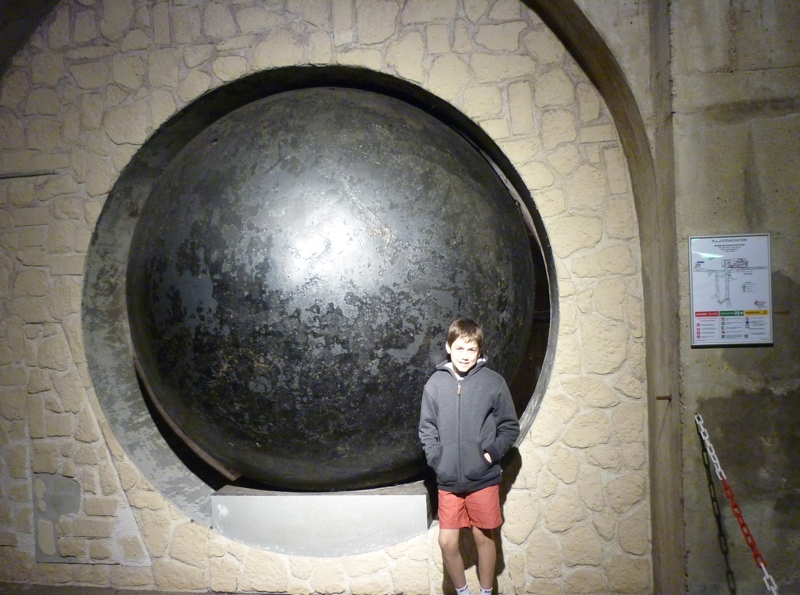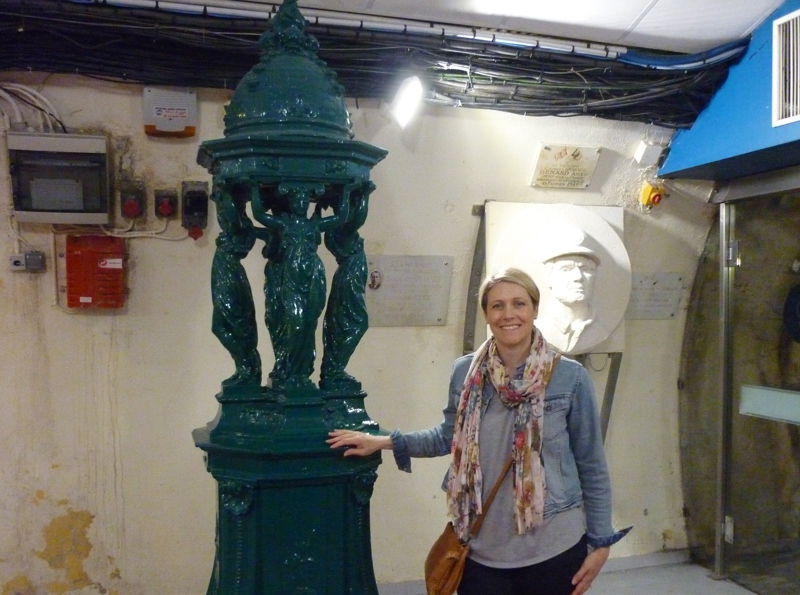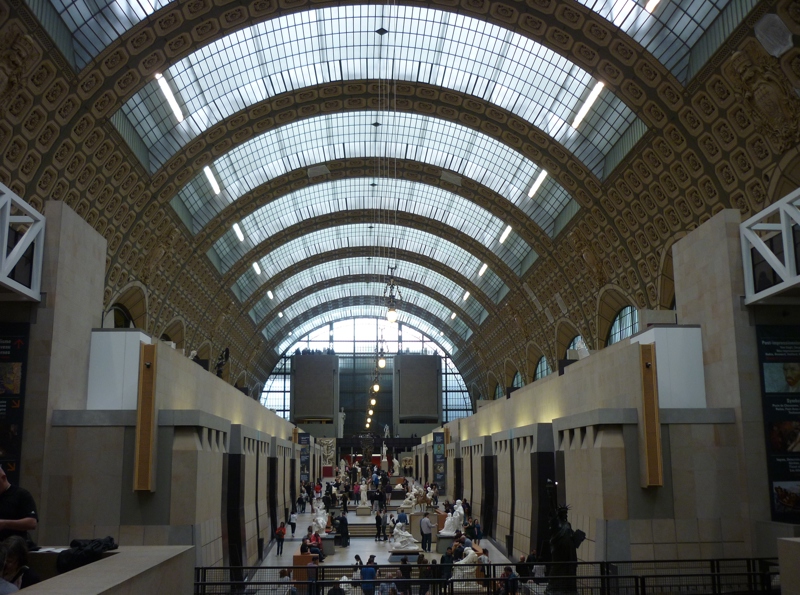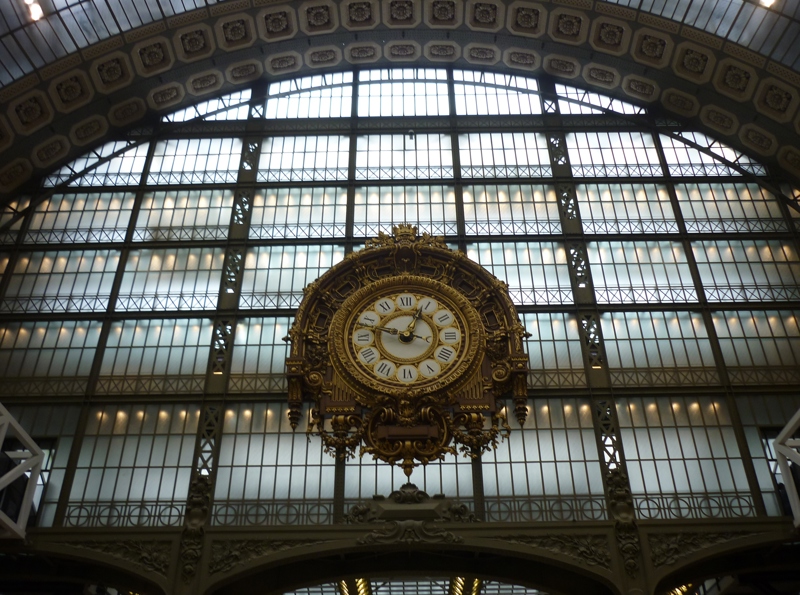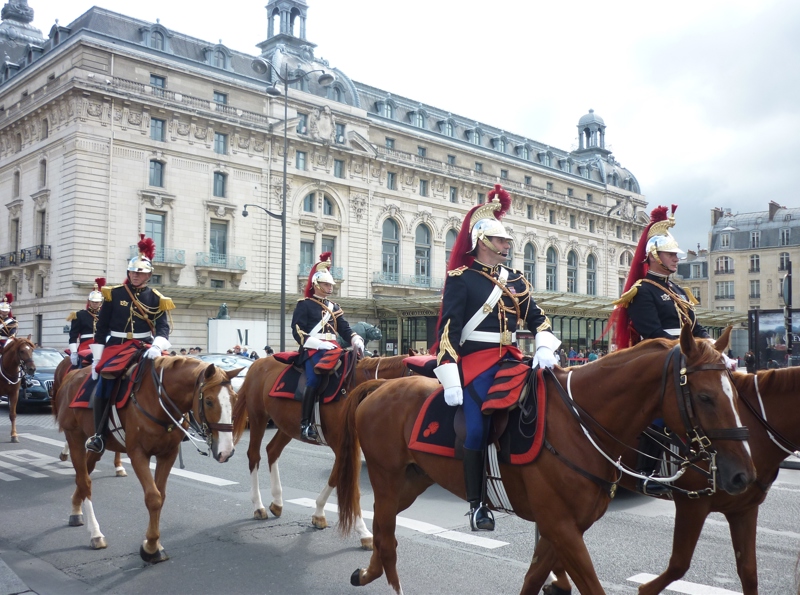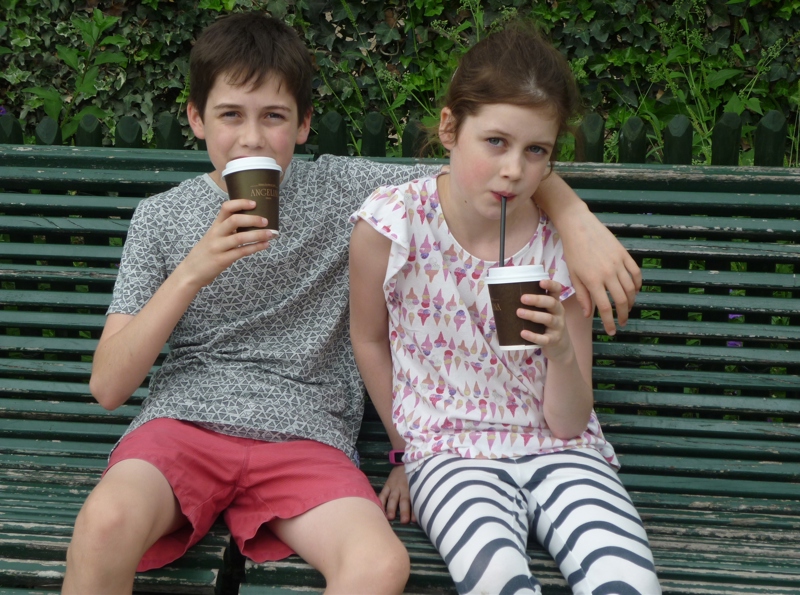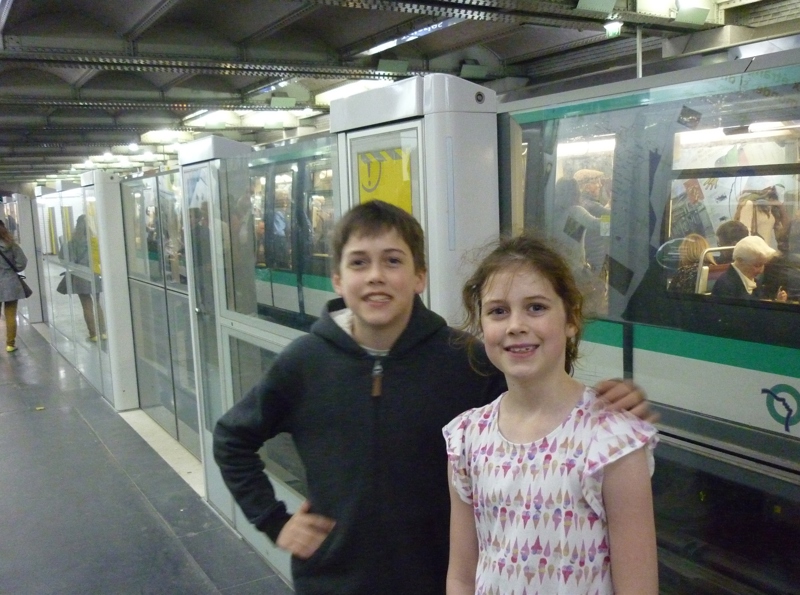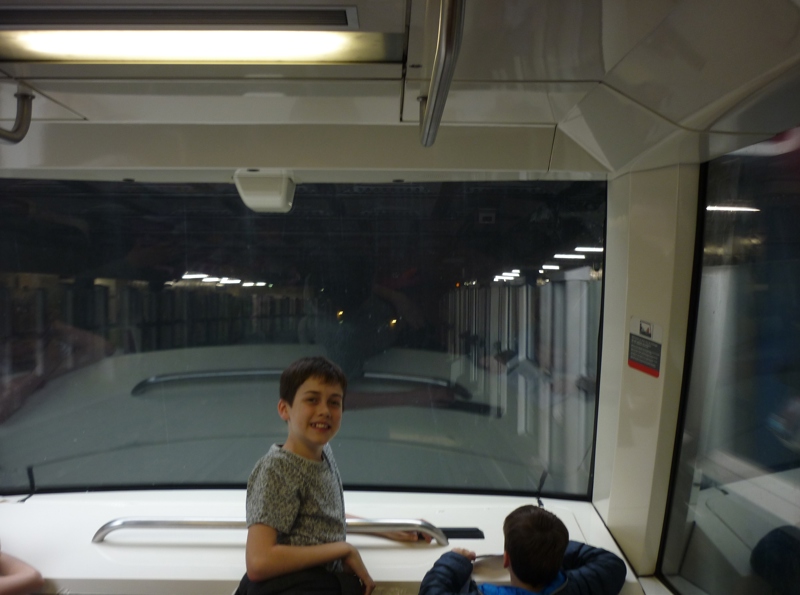Europe Trip
We’d initially planned a trip to Versailles today, however the distance, weather (rain was forecast), crowds (according to the Versailles website, this Saturday will attract peak visitor numbers) and ban on strollers in the palace itself, lead us to explore other options.
So we started our day with a more unusual attraction – a visit to the Paris Sewers Museum, the one that was closed last Thursday. After changing trains once at Franklin W Roosevelt, and hopping off one stop later at the Seine, we queued briefly before descending under the road to the sewer tour.
The tour is essentially just a walk around a 100 metres pathway underground, and along the way there are a series of exhibits depicting the evolution of waste treatment in Paris. I found it fascinating, especially seeing the massive steel ball that gets pushed along in large sewer pipes, to clean the walls from any obstruction. There’s also detail on the waste treatment to the point that Paris drinking water is mixed with treated effluent.
However a large section of the round trip was walking over treated sewage, so there was quite a stench which the rest of the family reacted to with horror (it wasn’t too bad really, you just need to breathe through your mouth!).
We didn’t spend too long at this Paris Museum Pass attraction, before moving on to another one – Musee D’Orsay. To get to the Musee we had to walk again along the banks of the Seine, this time on the left bank. It was about a 20 minute walk in light rain, and we were glad to finally arrive at the museum for the now all to familiar baggage check and x-ray scanning.
Musse D’Orsay was originally built as a grand station in 1900, and it still retains the great façade, domed roof and huge clock. In 1939 the platforms of Gare D’Orsay were deemed too short to be suitable for the modern, longer trains, and so it was relegated to suburban train status. During the WWII it was used as a mailing house, and later it was used as a base for a theatre company and auctioneer’s clearing house. Plans were then underway to turn it into a hotel, but the government heritage listed it and decided to turn it into a museum, which opening in 1986. The museum houses the largest collection of impressionist and post-impressionist masterpieces in the world including Monet, Manet, Degas, Renoir and (the children’s favourite) Van Gough.
It’s much simpler museum to visit than the Louvre. The works are split over four floors, all spread around an open atrium. It’s small enough that you can always work out exactly where you are. The size also allows you to cover off a discrete floor, or wing, and feel a sense of accomplishment, whereas the Louvre is so enormous it’s easy to get lost. Walking through the central open section gives you a full sense of the original station, which has been carefully preserved. The atrium is full of statues scattered around, providing more interest as you walk through them than in the Louvre, where there are entire wings devoted to statues, but few or none in the main rooms housing paintings. We had brought Oscar’s ipad, which kept him quiet, so the rest of the family was able to explore and spend a lot more time considering individual paintings. Altogether the day was far more relaxed than our Louvre day.
Upon completing our tours, we walked through the Jardin des Tuilleries again, and stopped for the obligatory play on the great playground there. I again went over the road to Angelinas, and downed another chocolate chaud so rich that I think they just melt fine milk chocolate and then serve it up in a cup.
We took the main number one train back east, and the kids enjoyed a session at the front of the driverless train (which is a bit freaky actually). These trains actually run on tyres, which make them quite comfortable. The other interesting feature with this line is that the stations have protective barriers which close off access to the tracks between trains. When the train pulls in, the train doors line up exactly with the opening platform barriers, so that both door and barrier open together to allow access. Neat huh?
On arriving back at Bastille, Mil and the big kids enjoyed a late lunch at the local café. Oscar was tired out and I took him home for some baguette, before enjoying my own peace and quiet down at the café an hour later.
I ordered a Croque Madame (ham and cheese toasty with a couple off eggs on top, fries and salad) and just sat like a Parisian and watched the world go by (or at least the busy entrance to the Metro in front of the Bastille monument). My late lunch/early dinner was delicious and it was lovely just to experience some tranquillity and soak up the Parisian lifestyle, before taking the 45 stairs back up the apartment stairwell to think about dinner – eating in tonight.
James Burnet
34 chapters
15 Apr 2020
Day 20
Sewers Museum and Musee D'Orsay
We’d initially planned a trip to Versailles today, however the distance, weather (rain was forecast), crowds (according to the Versailles website, this Saturday will attract peak visitor numbers) and ban on strollers in the palace itself, lead us to explore other options.
So we started our day with a more unusual attraction – a visit to the Paris Sewers Museum, the one that was closed last Thursday. After changing trains once at Franklin W Roosevelt, and hopping off one stop later at the Seine, we queued briefly before descending under the road to the sewer tour.
The tour is essentially just a walk around a 100 metres pathway underground, and along the way there are a series of exhibits depicting the evolution of waste treatment in Paris. I found it fascinating, especially seeing the massive steel ball that gets pushed along in large sewer pipes, to clean the walls from any obstruction. There’s also detail on the waste treatment to the point that Paris drinking water is mixed with treated effluent.
However a large section of the round trip was walking over treated sewage, so there was quite a stench which the rest of the family reacted to with horror (it wasn’t too bad really, you just need to breathe through your mouth!).
We didn’t spend too long at this Paris Museum Pass attraction, before moving on to another one – Musee D’Orsay. To get to the Musee we had to walk again along the banks of the Seine, this time on the left bank. It was about a 20 minute walk in light rain, and we were glad to finally arrive at the museum for the now all to familiar baggage check and x-ray scanning.
Musse D’Orsay was originally built as a grand station in 1900, and it still retains the great façade, domed roof and huge clock. In 1939 the platforms of Gare D’Orsay were deemed too short to be suitable for the modern, longer trains, and so it was relegated to suburban train status. During the WWII it was used as a mailing house, and later it was used as a base for a theatre company and auctioneer’s clearing house. Plans were then underway to turn it into a hotel, but the government heritage listed it and decided to turn it into a museum, which opening in 1986. The museum houses the largest collection of impressionist and post-impressionist masterpieces in the world including Monet, Manet, Degas, Renoir and (the children’s favourite) Van Gough.
It’s much simpler museum to visit than the Louvre. The works are split over four floors, all spread around an open atrium. It’s small enough that you can always work out exactly where you are. The size also allows you to cover off a discrete floor, or wing, and feel a sense of accomplishment, whereas the Louvre is so enormous it’s easy to get lost. Walking through the central open section gives you a full sense of the original station, which has been carefully preserved. The atrium is full of statues scattered around, providing more interest as you walk through them than in the Louvre, where there are entire wings devoted to statues, but few or none in the main rooms housing paintings. We had brought Oscar’s ipad, which kept him quiet, so the rest of the family was able to explore and spend a lot more time considering individual paintings. Altogether the day was far more relaxed than our Louvre day.
Upon completing our tours, we walked through the Jardin des Tuilleries again, and stopped for the obligatory play on the great playground there. I again went over the road to Angelinas, and downed another chocolate chaud so rich that I think they just melt fine milk chocolate and then serve it up in a cup.
We took the main number one train back east, and the kids enjoyed a session at the front of the driverless train (which is a bit freaky actually). These trains actually run on tyres, which make them quite comfortable. The other interesting feature with this line is that the stations have protective barriers which close off access to the tracks between trains. When the train pulls in, the train doors line up exactly with the opening platform barriers, so that both door and barrier open together to allow access. Neat huh?
On arriving back at Bastille, Mil and the big kids enjoyed a late lunch at the local café. Oscar was tired out and I took him home for some baguette, before enjoying my own peace and quiet down at the café an hour later.
I ordered a Croque Madame (ham and cheese toasty with a couple off eggs on top, fries and salad) and just sat like a Parisian and watched the world go by (or at least the busy entrance to the Metro in front of the Bastille monument). My late lunch/early dinner was delicious and it was lovely just to experience some tranquillity and soak up the Parisian lifestyle, before taking the 45 stairs back up the apartment stairwell to think about dinner – eating in tonight.
